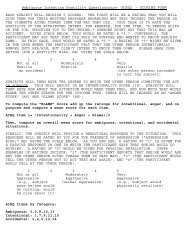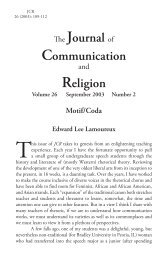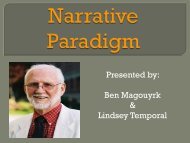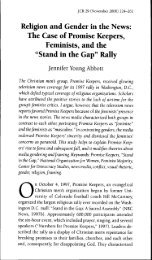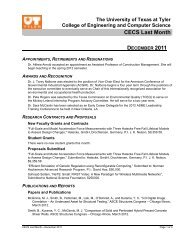"History, Analysis and Performance Considerations of Gerald Finzi's ...
"History, Analysis and Performance Considerations of Gerald Finzi's ...
"History, Analysis and Performance Considerations of Gerald Finzi's ...
You also want an ePaper? Increase the reach of your titles
YUMPU automatically turns print PDFs into web optimized ePapers that Google loves.
69<strong>of</strong> the vocal arpeggio. Higher bass voices may be necessary to provide support on the low D <strong>and</strong>C♯ <strong>of</strong> the second tenor at the words “<strong>and</strong> the same Way.” A slight ritard<strong>and</strong>o may also be usedon this short consequent phrase prior to the bass response in measure 58. Likewise, a slightslowing <strong>of</strong> tempo at measure 60, <strong>and</strong> tenuto on the final word “same” provides a strong sense <strong>of</strong>harmonic <strong>and</strong> thematic relief upon arrival <strong>of</strong> the D♭ “Pasture” theme.Finzi’s slower tempo <strong>and</strong> più sostenuto indications at measure 61 support the function <strong>of</strong>theme e as being the final dissipation <strong>of</strong> energy <strong>of</strong> the Section B march. The octave alto leap <strong>and</strong>rising organ line in measure 62 provides a moment for a small crescendo prior to the dynamicresolution which follows on “To feed <strong>of</strong> Thee.” A very subtle lift following the first eighth notein measure 64 will better articulate Crashaw’s stanza-ending text, “in thine own Face” withoutdistracting from the lyrical connectivity <strong>of</strong> this section’s theme. Each <strong>of</strong> these final three wordsshould be treated with a tenuto stress, strengthening the slowing <strong>of</strong> motion <strong>and</strong> sense <strong>of</strong>conclusion. The low register voicing <strong>of</strong> this final chord may require some higher bass voices toadd an E♭ one octave higher than that indicated, while others may be needed to support the tenorlow C♭.Section CFinzi’s love for words is most strongly felt in his slow, lyrical writing. Ferguson in fact,indicates that many <strong>of</strong> his works began with slow movements, <strong>and</strong> that his initial ideas werethemselves typically slow <strong>and</strong> lyrical. 70 In “O dear Memorial,” Finzi calls for a tender delivery(con tenerezza), <strong>and</strong> by metrical placement or rise in line provides for stresses on each <strong>of</strong> theseopening three words. An eighth rest should be inserted after the word “death,” providing greatermusical <strong>and</strong> dramatic weight to the words “lives still,” <strong>and</strong> to insure (fittingly) that there is ample70 Crutchfield, 169, <strong>and</strong> Dressler, 4.



